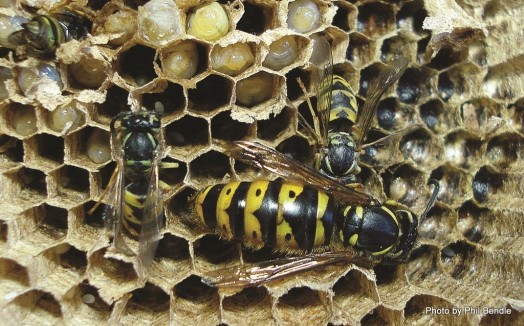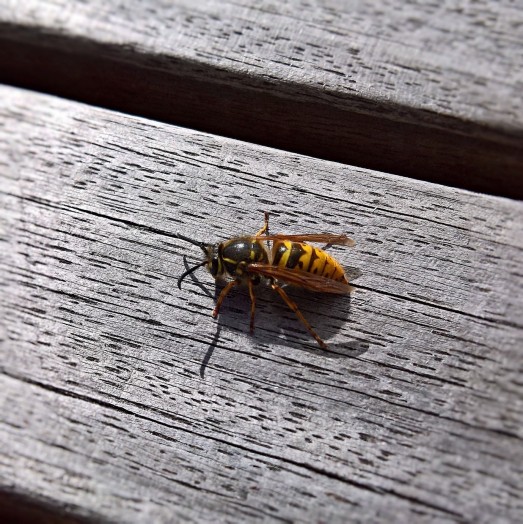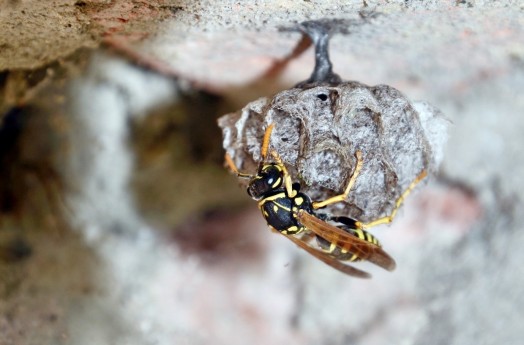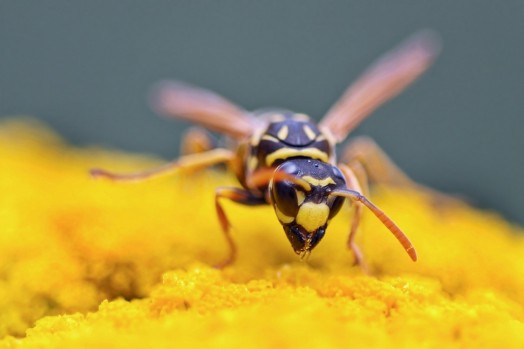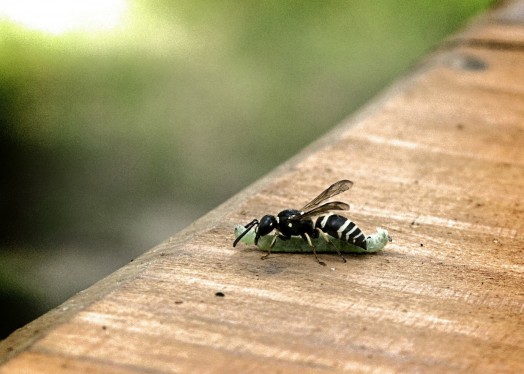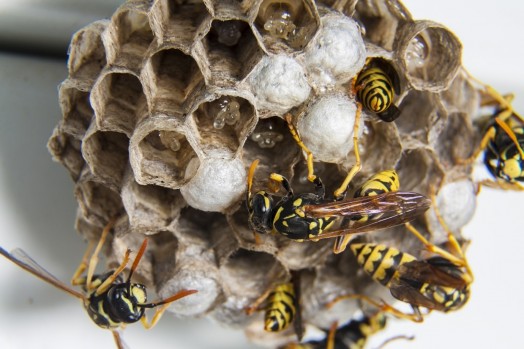Dealey Pest Academy- why you shouldnt freak out if you see a queen wasp. And why you definitely shouldnt kill her.
Monday 8th April 2019
Dealey Pest Academy- why you shouldn’t freak out if you see a queen wasp. And why you definitely shouldn’t kill her.
We like to put out information that will help people so that a lot of the beautiful animals that people refer to as ‘pests’ actually shouldn’t be harmed. I hope you enjoy the fascinating life cycle of the following beast:
If you are careful over the next few weeks, you will be able to see THE QUEEN!
Unfortunately, these monarchs are not the variety to give you a knighthood; rather, they are the kind to give you a rather unpleasant sting if you disturb them.
Queen wasps are out and about this time of the year. They are the leader of this year’s wasp colony, and in spring the queen emerges from her little self-build wasp nest that she has been hibernating in.
Last year these queens said adieu to their brothers, sisters and mother, and flew off to do their own thing. Each wasp nest creates several queens, and they are the lucky ones. They live for more than one year, where their siblings which make up the the majority of the sterile worker wasp population, will quietly (or noisily and violently) die of starvation or frost in the colder autumn months.
Each queen will make a small nest to keep the frost off during their long sleep. She will find a nice quiet area which is sheltered from the worst of the weather. The site should have an opening in the bottom for access and protect the sleeping queen from cold temperatures, high humidity and hungry predators. These mini wasp nests can be inside hollow trees, in garden sheds, in attics, even inside old cars.
Amazingly, these wasps are not yet a year old, and they haven’t been outside much and, unless I’m missing something, they do not have the benefit of geography lessons. And yet, when they find a suitable place to spend a whole season without being disturbed safely, something in their genetic memory tells them “this place is just right to make a little wasp nest.”
She will make her small, golf ball-sized wasp nest out of wood. She goes out and diligently chews dead wood and regurgitates it as paper which slowly builds up into her pretty little hideaway where she will stay for the whole winter.
It is in the spring, around about now when the weather warms up, that she will emerge. She discards her old little nest, she’s been sleeping in it all winter and no doubt, it is full of the kind of bacteria and ectoparasites that will preclude the successful formation of a new family.
Off she flies to find a suitable site for a nest, again anywhere sheltered will do so long as there is a good supply of water and food nearby and it won’t get too hot.
Once she has found the site, she goes about chewing up deadwood to build the beginnings of the new nest.
She did her breeding last autumn while the rest of her nest was dying and now, she’s ready to lay some eggs in the carefully constructed paper cells of her new home. One egg per cell. This a called a wasp nursery. Once she has laid her eggs, she continues to make thousands of trips to pulpwood and continue to build her nest around the developing eggs.
But her job is far from done. Wasp larvae (grubs) will soon be hatching, and these little things will be too immobile and stupid to fend for themselves, so the queen now sets about finding some food for her offspring.
Queen wasps will largely feed on nectar early in the spring, which makes them important pollinators for early spring flowering plants. The rest of the nest when it hatches are more or less accidental pollinators, so wasps aren’t generally considered to be particularly beneficial to flowering plants, but the queens are different. Nectar is usually her most abundant food source before other foods become more available.
Later in the spring, she will be able to find more proteinous fare such as
- Other insects
- Spiders
- Larvae of other insects
- Dead animals
Think about this- in gardens; there are many grubs and caterpillars which will ruin a flourishing vegetable garden. Queen wasps can live on aphids and mite and also the larval stages of many moths, midges and flies, making them excellent pest controllers in themselves!
Please don’t freak out when you see a queen wasp in your garden; she is probably helping you out.
Hunting other insects is what she does. And this is the real reason for a wasp’s mighty stingers. They weren’t just born to make human lives miserable by hurting you a little bit when they sting you. Their stingers are well designed for immobilising other insects and larvae. The wasp stinger is made like this- They have two little bards on the end of their pointy bum, that look much like an uneven set of tweezers. The longer barb is for holding their prey still, and the shorter barb is the one that injects venom. A wasp sting is a really well-designed bit of kit that is quite deadly when used against other insects.
It is around about this time that we get our first call-outs for wasps. The queen wasps are busy in unfamiliar territory and can stray into people’s houses. Either that or they have been quietly hibernating in your loft and are just emerging into the sunlight as the weather warms up.
They look bigger than worker wasps, sometimes significantly so. They are about a cigarette’s width longer than a normal wasp, and they have a pointier stinger. Naturally, people see them and think, “oh god, I’ve got hornets!!!” Mostly just an open window and some gentle encouragement is all a queen needs. They are really quite nice if you treat them right. Obviously, do not try this if you are allergic. Get someone to help you out.
If the queen wasp can go about her day without getting caught up in someone’s living room, then she will take food back to the nest for her first batch of larvae.
Some solitary wasps have a rather ghoulish method of immobilising other insects and then sealing them inside the hexagonal cells of the nest with the grubs. In this way, the grub can slowly consume the trapped insect. Imagine that! Waking inside a dark cell with a giant maggot that slowly eats you. It probably doesn’t bear thinking about.
But, back to our queen wasp. She is so busy finding food for her grubs that she doesn’t have time to eat for herself so, where does she get her energy from? Well.. the insects that she brings back for her grubs to eat have a skeleton that is made from a protein called chitin. When the grubs digest this protein, they convert it into a simple sugar solution which they then excrete through their skin. The queen wasp will then lick this sugar solution off her grubs to keep her going for the next hunting expedition. So she can exist on fast food which doesn’t slow her down while she rushes around getting much more nutritious meals for her children. How cool is that?
After the initial colonising of the wasp nest is complete, the queen’s outside days are numbered. The first larvae to pupate and hatch out will be sterile workers. They will take over the building of the cells, the trips to the woodpile and the feeding of the grubs. The queen will soon become a full-time mother.
Once the workers have taken over, her abdomen becomes quite swollen with new eggs. She becomes so heavy that she loses the ability to fly, and now, she will not go outside again.
She will spend the rest of her days inside the nest laying egg after egg in the newly made cells that her worker wasps have constructed around her.
She will die inside the nest, having laid up to 8000 eggs. Some of these will be her proud successors. Some of the wasp larvae will be marked for a royal upbringing, and these will make the new queen wasps for the coming year. And so the whole process begins again.
It’s the circle of life Elton, and it’s really rather fascinating.

